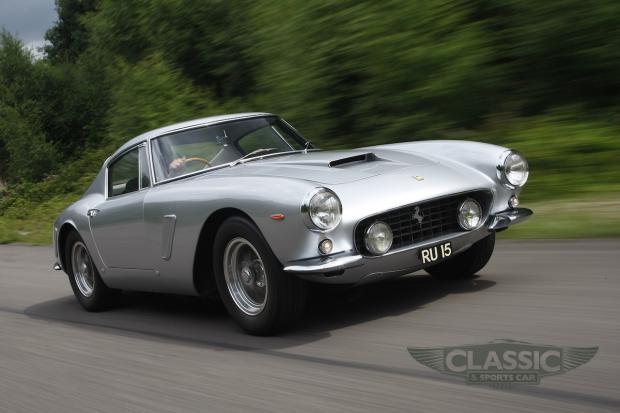
Conduct a straw poll of people who really know Ferraris and the answer will invariably be the same: the finest all-rounder to wear the Prancing Horse is the 250GT short-wheelbase berlinetta. People such as Sir Stirling Moss, for instance: “Without a doubt it is the greatest Ferrari road car – perhaps the greatest road car of any make. You really could drive it to a race, compete – and win – then drive it home.” He should know. From 1960-’62, SWBs dominated GT racing and Moss – along with fellow Brit Mike Parkes – was responsible for the lion’s share of its victories. Aboard Rob Walker’s ‘2119GT’ (and later ‘2735GT’) Moss took two Goodwood Tourist Trophies, twice won in Nassau and was victorious at Brands Hatch and the British Empire Trophy at Silverstone.
SWBs also won at Monza, Snetterton, Spa, Montlhéry and Auvergne, plus various SCCA events in the USA. They took Tour de France laurels three times – with 1-2-3s in 1960 and ’61 – and scored class wins in enduros at Sebring and Le Mans. “It was comfortable on long-distance events,” recalls Moss. “I had a radio fitted so that I would know how the race was going from Raymond Baxter’s commentary!”
Yet it’s as much for its ability as a road car – not to mention its gorgeous shape – that the SWB has become so highly prized. “I used to drive it on the road when I was in Nassau,” says Moss. “They are docile but then you can really turn up the wick on the track – it’s a very versatile car.”

Versatile, and desirable. And chassis 3067GT is the most coveted combination of all. Ordered through Colonel Ronnie Hoare’s Maranello Concessionaires in November 1960, it was completed in December 1961 with Competizione alloy coachwork by Sergio Scaglietti’s Modena carrozzeria and Lusso trim. In April ’62, first owner Geoffrey Barnard handed over £4500 – plus a massive £2166 17s 2d in Purchase Tax – for RU 15, his new Rosso Corsa SWB. The elderly enthusiast also ordered an extra Ferrari badge for his dog – to replace the one the hound had worn when riding in the 300SL ‘Gullwing’ that departed to make way for the Ferrari. One of just four alloy-bodied right-hookers, ‘3067GT’ combines a lightweight body and alloy gearbox – saving 300lb – with a fully trimmed cabin, tractable ‘street’ 240bhp engine and smaller (22gal) fuel tank to leave a decent boot for touring.









